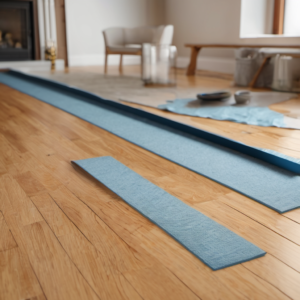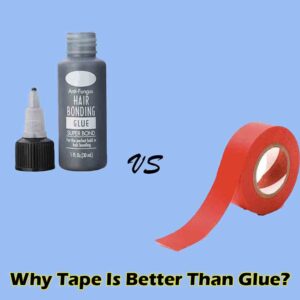When it comes to DIY projects or professional painting endeavors, the choice between masking tape and painter’s tape can significantly impact the outcome. Many individuals use these terms interchangeably, but there are subtle yet crucial differences that can make or break your project. Let’s delve into the basics to comprehend the distinctions between masking tape and painter’s tape.

Demystifying Masking Tape: A Closer Look
The Versatile Companion for General Use
Tape Vista
Masking tape, a staple in every toolkit, is a versatile adhesive tape designed for a myriad of applications. From securing surfaces during painting to bundling objects together, masking tape is known for its flexibility and ease of use. But what sets it apart from its counterpart, painter’s tape? Let’s explore the unique features and applications that define masking tape.
Decoding Painter’s Tape: Precision in Every Strip
Tailored for Painting Perfection
Tape Vista
Painter’s tape, on the other hand, is specifically crafted for the meticulous demands of painting projects. Renowned for its precision, painter’s tape boasts qualities that make it the go-to choice for achieving clean lines and seamless edges. As we unravel the characteristics of painter’s tape, you’ll discover why it’s the preferred tool for painters seeking perfection in their work.
The Showdown: Masking Tape vs. Painter’s Tape
| Criteria | Masking Tape | Painter’s Tape |
|---|---|---|
| Adhesive Strength | Moderate to High | High |
| Surface Compatibility | General-purpose | Designed for painting surfaces |
| Precision in Lines | Suitable for basic projects | Provides clean lines and sharp edges |
| Removability | May leave residue on delicate surfaces | Typically leaves no residue |
| Use Cases | Versatile – from bundling to light paint | Ideal for detailed painting projects |
| Price Range | Budget-friendly | Slightly more expensive but value-added |
| Color Options | Typically beige or tan | Often available in blue or green |
Now, armed with a clearer understanding of their differences, you can confidently choose the tape that aligns with the demands of your project. Remember, whether it’s the flexibility of masking tape or the precision of painter’s tape, your choice plays a crucial role in the success of your painting endeavors.
Frequently Asked Questions (FAQs)
Q: Can I use masking tape for painting projects? A: Yes, masking tape is suitable for basic painting projects. However, for more precise and detailed work, painter’s tape is recommended.
Q: Does painter’s tape leave any residue on surfaces? A: Painter’s tape is designed to leave little to no residue on surfaces, ensuring clean lines without any damage.
Q: Is masking tape more cost-effective than painter’s tape? A: Yes, masking tape is generally more budget-friendly, making it a popular choice for various applications.
Q: Can I use painter’s tape for tasks other than painting? A: While painter’s tape is designed for painting projects, its precision makes it useful for other applications where clean lines are essential.
Q: How do I remove masking tape without damaging surfaces? A: To avoid damage, remove masking tape at a 45-degree angle, and do so slowly. If any residue remains, use a gentle adhesive remover.
Tips and Tricks: Maximizing the Potential of Your Tape
Now that we’ve clarified the disparities between masking tape and painter’s tape, let’s dive into practical tips and tricks. Whether you’re a DIY enthusiast or a seasoned professional, these insights will help you make the most out of your chosen tape, ensuring a smooth and successful project outcome. Discover the nuances of application, removal, and other expert-recommended techniques that elevate your tape game.
In conclusion, the choice between masking tape and painter’s tape depends on the nature of your project and the level of precision required. While masking tape offers versatility, painter’s tape excels in delivering impeccable results in painting tasks. Understanding the nuances between the two will empower you to make the right decision for your specific needs.










